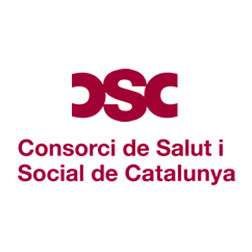11/11/2021 - 16:50
World Sustainable Food Capital. The initiative is complemented with a book archive, based on 12 cases and 575 volumes.
Activities are already at different stages at city schools, organised as part of this year’s programme while the city is the World Sustainable Food Capital. Various city museums are also now joining in with activities for publicly funded schools, based on their own collections and personalities. The activities are intended to promote healthier and more sustainable food which is environmentally friendly and helps tackle climate change.
The museums taking part in the initiative are the Fundació Miró, the Fundació Antoni Tàpies, the Museu del Disseny, the Museu Nacional d’Art de Catalunya (MNAC), the Museu Picasso and the Museu de Ciències Naturals. Sixty schools have so far signed up, with around 3,000 pupils expected to participate in all.
There are ten educational activities:
The Fundació Miró has designed three different activities: “Artichokes here, potatoes there!” is aimed at students in their first, second or third year of primary school. “The trees speak to me” is aimed at children in their fourth, fifth or sixth year of primary school, and “I work as a gardener” is for children in their second half of infants’ school. All three activities connect the artistic processes of Joan Miró with food, starting from the idea that the artist used to stroll around the cultivation areas of Mont-roig del Camp observing fruit, vegetables, fruit trees, to later paint their landscapes. He actually compared the creative and artistic process to the natural course of vegetables: planting, growth, ripening, watering, pruning etc.
All three activities are offered in the museum classroom, over the course of a whole term.
The Fundació Antoni Tàpies is offering “Lay the table! The everyday ritual of eating”, a dynamic visit to delve into the part of the artist’s work which is directly linked to the social ritual of eating. The activity is aimed at students from any school year between P4 and baccalaureate and takes place at the exhibition itself, reflecting on the process of nutrition and the social act of eating, plus its cultural connotations.
The Museu del Disseny de Barcelona has designed two different activities, one for students in their last two years of primary school and another for students in secondary school or on baccalaureate or vocational training courses. The activity for primary school pupils is entitled “Where are you from, packaging?” and centres on food packaging past and present, with a visit and workshop linked to the decorative arts collection, reflections on food packaging used in the past and its modern equivalent, inviting students to think and create new food packaging designs which are more sustainable and respectful towards the environment.
The second activity is entitled “May contain traces of…” and aims to discover the hidden past of some foods and products we consume every day and which are a legacy from the colonial past. Based on a dynamic visit to the museum’s decorative arts collection, the activity reflects on the sustainability of human resources and on today’s form of consumption.
The Museu Nacional d’Art de Catalunya has designed an activity for primary school students entitled “Art in the Pantry”, offering a drawn visit through the museum’s rooms to discover what food was like over three hundred years ago and reflect on how and what we eat today. This is an activity to look, draw and think about local food, where we shop and how we care for the planet with our diet.
The activity by the Museu Picasso is entitled “Picasso’s recipes” and offers a project for students at primary school or in the first two years of secondary school. The project includes a prior training programme for teachers, with monitoring by professionals from the museum on the development of the activity at school and a visit with students to the Museu Picasso. The project adopts a cross-cutting approach based on art, taking Picasso’s work as a reference point and that of other classic and contemporary artists, as well as food aspects, centring on a healthy and sustainable diet. Six schools have started the preliminary work and the project is also to be offered during the second term of the school year.
Finally, the Jardí Botànic de Barcelona is offering two activities linked to the exhibition “More than bees. Pollinators and flowers, life at stake”, which explains the essential role that pollinators play in human food. The activity “Stories of pollen. Flowers and insects in the garden” is aimed at students between their third and sixth year of primary school, while “Flower to flower. Plant seduction” is an activity with a booklet for children to complete themselves, designed to connect the exhibition with the garden and aimed at children aged from 5.
These museum activities, based on their collections and looking at sustainable food, have been conceived with an ongoing vocation and are to continue beyond this year. They are also complemented with a proposal from the city’s teaching centres and the Associació de Mestres Rosa Sensat, with the collaboration of the Barcelona Education Consortium, consisting of 12 cases of books and a total of 575 volumes. This material provides an archive on this topic and will be available to schools who need it.
The range of activities for city schools as part of the programme for the World Sustainable Food Capital has been defined over the last few months through other projects such as “Eat responsibly” and “Here, now, schools”, which also have perspectives reaching beyond 2021.
- espais cedits a les escoles









